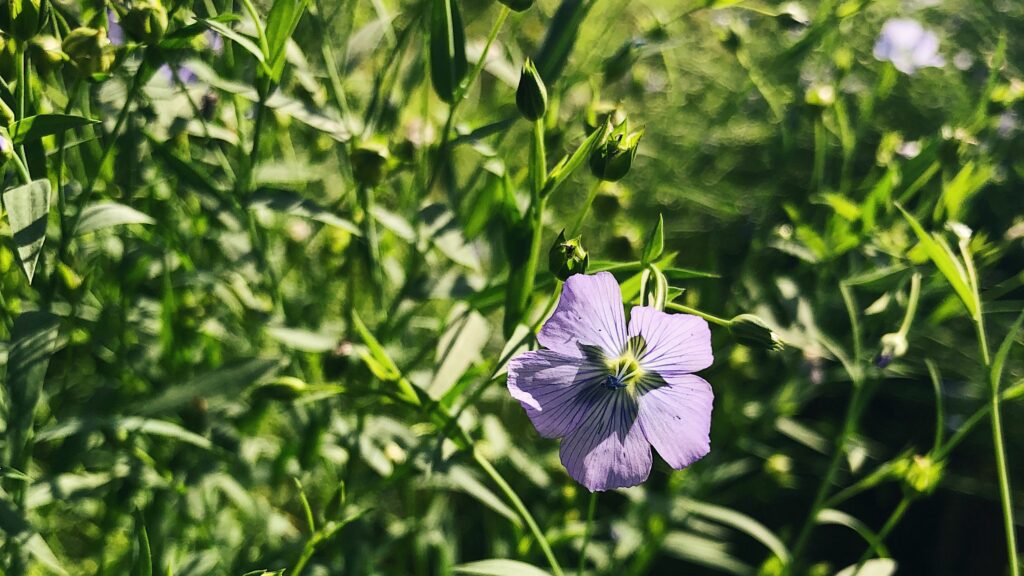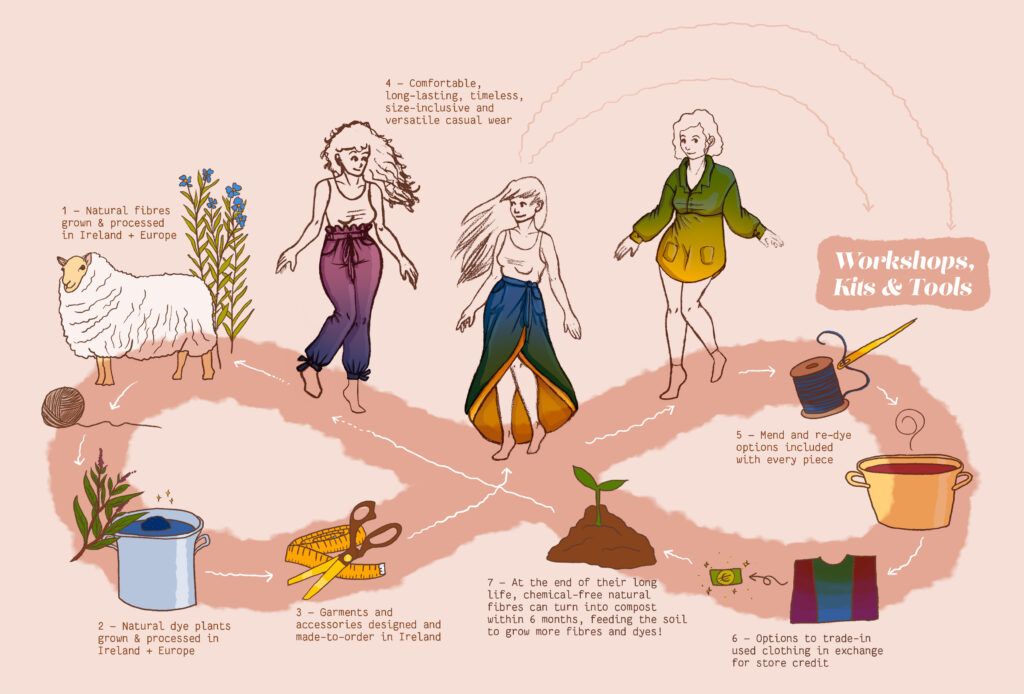Not many people spend a lot of time thinking about dirt.
But it’s a topic that needs more attention. Our planet’s soil is one of our most precious resources, and regenerative fashion is part of a mission to help it thrive.
When we talk about the impacts of agriculture, it’s common for the mind to immediately fly to growing food – how much farmland we need, how much water we use, or the impact of animal products.
In short, we think about what we grow to survive (and, for the record, animal products aren’t in this category).
But we forget that the textile industry also relies on agriculture. Not only in plant-based materials like linen, cotton, bamboo, and hemp, but also in materials sourced from animals – wool, alpaca, mohair, or silk, just to name a few.
The sustainable fashion movement is a commendable push towards lessening our impact on the planet’s longevity. But it’s time to go beyond that – it’s time to work on making the world better with our choices, not just less bad.
Regenerative fashion is trying to do just that. It focuses on water usage, soil quality, and all sorts of things that the planet craves.
Here’s the lowdown on why regenerative fashion matters.
Regenerative fashion focuses on renewing the planet’s natural cycles. Earth learned how to recycle a long time ago.
The authors of Fibershed said it better than I ever could:
Nature is full of cycles. Plants and animals are born, grow, reproduce, and die, returning to the earth from which all life springs. Water travels in cycles from sea to clouds, then to land, lakes, creeks, and eventually back to the sea again. The carbon cycle moves molecules through and between ancient carbon pools on the planet, including oceans, plants, soils, and the atmosphere. Fibershed: Growing a Movement of Farmers, Fashion Activists, and Makers for a New Textile Economy
Basically, plants and animals (including humans) were once part of a cycle that sustained itself.
Mycelium (the kind of terrifying large underground body of fungi) uses dying plant and animal matter to enrich the soil with all the nutrients it needs – carbon, nitrogen, the works. Animals eat the plants, and the cycle is supposed to continue without interruption.
Modern agriculture, including fashion agriculture, has totally disrupted that cycle. Fashion accounts for 10% of all human-made greenhouse gases and almost 20% of all wastewater.
Not only that, but some estimates say 90% of all Earth’s soil could be degraded by 2050. That’s bad news.
We need regenerative fashion because it focuses on using the way we produce textiles to actually improve the planet’s resources, from the soil quality to endline pollution.

Regenerative fashion could be the answer we’ve been searching for – and all it takes is making conscious choices.
Making conscious choices isn’t always easy, but it is simple. Use your money to support fashion that follows through on improving the planet.
When you support regenerative fashion brands, that means you’re supporting a few key practices. There’s so much thought that goes into this movement for different reasons, and it’s all fascinating (at least to me, anyway)!
If you’re a TL;DR kind of person, here goes:
Native plants are meant to grow in their climate. They’ll never take as much energy to thrive as non-native plants with different nutritional and water requirements. So, growing deep-rooted native plants and semi-preserving them when harvesting helps them draw CO2 (a necessary natural compound, but also a human pollutant) out of the air and into the soil.
Other diverse plants need CO2 to grow, so this enriches the soil in the process. Allowing plants to die and decompose helps the cycle along.
Banishing pesticides and all other “killing” chemicals helps the soil and environment since bugs and wildlife are integral to the earth’s biodiversity.
Animal agriculture also plays a role in regenerative fashion. By nature, the sheer volume and small square footage of enclosed grazers is unnatural. Regenerative agriculture rotates herds, never allowing them to completely destroy an area, instead giving the soil time to heal and re-diversify.
It goes without saying that plastics (fossil-based carbon products) have no place in our fashion. Plastic-based fabrics like polyester may have some quick benefits, like being anti-wrinkle, but these shallow perks will never be worth the environmental harms they cause.

Regenerative fashion doesn’t stop at the beginning of the cycle. It follows through all the way to the end.
Your clothes should last you as long as you need them, and then return to the earth seamlessly to continue enriching soil and growing new life.
Natural, chemical-free textiles will break down in compost and become the carbon they came from.
At Talú, we’re doing our best to make our production process mimic this natural cycle.
All of our clothing is made with fully-traceable textiles using 100% natural fibres and dyes. We make every piece to order, so we never create surplus or unnecessary waste. We’re also always looking for more farmers and suppliers to collaborate with, so that someday we can be a 100% regenerative fashion brand.
We’ll re-dye or mend your purchases, so you never have to give up a piece with life left in it! We also offer options for trading in or reselling them.
I’m passionate about sharing resources and instructions for doing this yourself, so you can take part in the movements making our fashion better for the world with your own two hands!
If it sounds like we’re on the same wavelength here, check out my free guide about how to build your sustainable wardrobe at the bottom of this post I designed it to help you keep the clothing you own lasting longer & out of landfills – I hope you love it!
And if you need a jumping-off point, I also wrote a blog on how to build a capsule wardrobe the sustainable way. Happy reading!
Pin this post!
